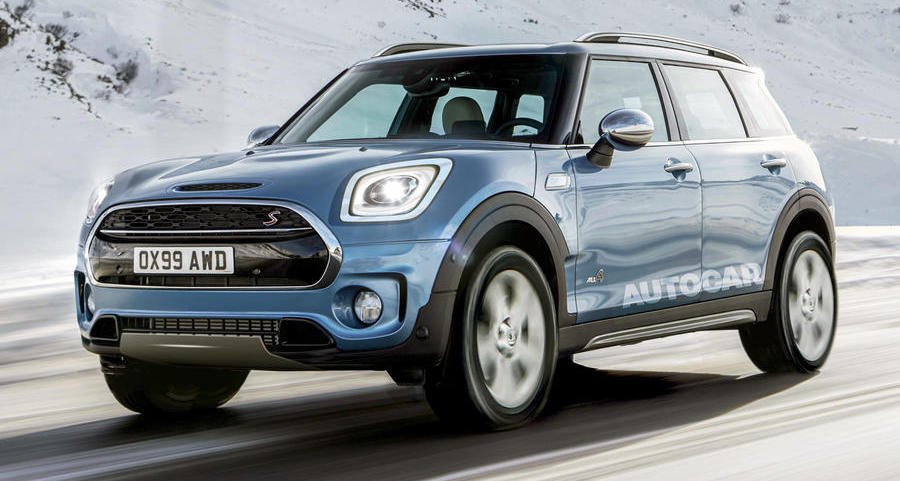New 2023 Mini Countryman PHEV to be firm's most powerful car

The next-generation Mini Countryman plug-in hybrid, due next year, will be the BMW-owned brand’s most powerful series-production model yet.
The Countryman will share its FAAR front-driven architecture with the all-new BMW 2 Series Active Tourer and be produced alongside that model and the upcoming X1 crossover in Leipzig, Germany. It is set to use the same range of petrol and plug-in hybrid powertrains, the most potent of which will be a four-wheel-drive PHEV set-up with a combined output that shades even that of the current Mini JCW GP hot hatchback.
The powertrain will pair a 1.5-litre three-cylinder petrol engine with a 174bhp electric motor for a combined output of 322bhp, making the model substantially quicker than today’s 217bhp Countryman Cooper S E All4. A 14.2kWh (usable) battery will supply it with around 55 miles of EV range, a near-100% increase. It can be fully charged in 2.5 hours from a 7.4kWh charger.
It is not yet confirmed whether the most powerful Countryman will wear the JCW badge traditionally reserved for Mini’s performance models, but the brand has already confirmed its intentions to carry the nameplate through to its electrified product range.
A less powerful PHEV option with a combined 241bhp will also be available, as will 168bhp 1.5-litre three-cylinder and 215bhp 2.0-litre four-cylinder turbo petrol engines, both with 48V mild-hybrid technology, and a 2.0-litre diesel.
The Countryman will follow its BMW X1 sibling in gaining a pure-electric powertrain option, too. Few details are currently available but, like the combustion-engined car, it is expected to be front-wheel drive as standard.
We got our first look at the hot range-topper late last year. A camouflaged test mule gave itself away with a beefy quad-exit exhaust, sports alloys and prominent rear spoiler.
Importantly, however, FAAR will not be used for Mini's long-awaited entry-level supermini, known at this early stage as the Minor, which will be built in China as part of a new joint venture between BMW and Great Wall Motors and use a platform supplied by the latter.
Crucially, the Countryman will be noticeably bigger than today's car, with early estimates suggesting a 200mm increase in length to provide enhanced load capacity and leg room. Effectively, this increase will bump Mini's crossover into a new segment, moving it away from rivals such as the Toyota CH-R and Nissan Juke, and lining it up against the larger RAV4 and Qashqai.
The Countryman's tenure as Mini's only SUV model is nearly up. It will be joined in dealerships shortly after launch by an all-new electric crossover model built in China by Great Wall Motors, as part of the 'Spotlight' joint venture between the two companies.
However, that model is expected to be smaller than the Countryman, so the existing car will continue to cap out the fourth generation of models sold by Mini under BMW ownership.
Related News
